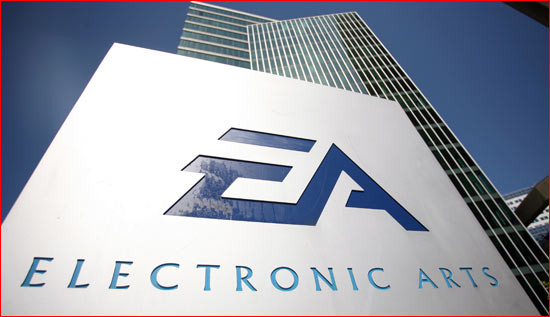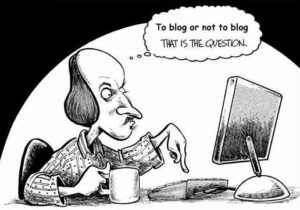Applying Groundswell to Social Recruiting at Electronic Arts (EA)
Posted by: Glenn Gutmacher, VP ACES
In order to explain how to use social networks to build targeted online communities at a recent Kennedy Information conference, I found the book Groundswell by Charlene Li and Josh Bernoff to be useful. I then  chose Electronic Arts (EA) as a recruitment example which illustrates some best practices. Here are some highlights.
chose Electronic Arts (EA) as a recruitment example which illustrates some best practices. Here are some highlights.
Before we get to EA, realize the Groundswell is “a social trend in which people use technologies to get the things they need from each other, rather than from traditional institutions like corporations.” In our context, for example, it can enable recruiters to learn best practices from their peers, or let job-seekers bypass recruiters to find hiring managers and hidden opportunities. In EA’s case, they walk the line: the corporation is providing content, but not exclusively, and it leverages the community to help evangelize the company and its talent mission.
Many recruiters’ first tendency is to put their job-related content into social media outlets. However, that should be a small fraction of your output, and hopefully you already know to put yourself in the candidates’ shoes — they read from a what’s-in-it-for-me (“WIIFM”) perspective — that will help you self-edit and spin the “what’s great about your company” news into appealing content. When you do, use interesting formats and perspectives for that content. For example, post a video to convey what real employees say and do. Be unique and interesting if you want a chance of it going viral.
How to Make Blogging Work for Recruitment
When blogging for talent attraction purposes, do as little as possible yourself, but rather engage employees at or a level above your target roles to talk about what they do, and things they are interested in (recruiters can also feed them content ideas, but don’t do any more than suggest – let them take the lead). They (and you) should also join conversations on existing social networks and otherwise engage with relevant sites that encourage user-generated content.
 Blogging is a vital component to your social media strategy because good bloggers can be your best evangelists. Group multiple in-house experts (not recruiters) who don’t yet blog to contribute to a rotating blog. Tap knowledgeable, curious employees.
Blogging is a vital component to your social media strategy because good bloggers can be your best evangelists. Group multiple in-house experts (not recruiters) who don’t yet blog to contribute to a rotating blog. Tap knowledgeable, curious employees.
Encourage them to read and comment on other blogs to get comfortable with a feel for what’s out there so they can fit in and yet develop a unique voice. Remind them that posts need not be long or complex (e.g., comment on a tool or news item they’ve seen).
Whatever content is generated can be crossposted to your online communities (more on that later) and give your visitors widgets that let them put your interesting content onto their blogs/websites (use WidgetFinder, WidgetBox, TypePad blog widgets, or any of these).
Your Online Community
A successful community requires various types of involvement, according to Groundswell: Creators (write/broadcast), Critics (rate/review/comment/contribute), Collectors (organize content via RSS feeds/tags), Joiners (visit social networks/create profiles), Spectators (read/watch/listen). For social content, 21% of online US consumers are Creators, 37% are Critics, and 69% are Spectators. It’s even more extreme with Jake McKee’s 90-9-1 principle: in a community, 90% of visitors just view content, 9% only comment or react to it, and 1% create it.
So just a little content seeding can get your community started, but expect it to be an ongoing effort (e.g., subscribers to any of Maureen Sharib‘s recruiting/sourcing industry discussion groups knows how much she puts into keep conversation going). Focus on a mix of open-ended, topical subjects with information and links of value to your community membership target, with occasional promotion of newsworthy activities by relevant people at your company.
If you’re authentic, serve a niche, and your group adds value to the groundswell, evangelists — both internal and external — will emerge, often from surprising places (so while you should make some smart guesses, don’t unnecessarily limit yourself on outreach channels).
Regardless of their motivation (gaining influence, altruism, validation, belonging, etc.), treat them like gold and give them what they need to turbocharge word-of-mouth. For example, use systems that let community members support each other (link share, ratings and comments, wiki-like FAQs, search, etc.) Also take advantage of crowdsourcing: listen to your fledgling community, occasionally ask questions, and they’ll tell you what they want and what you need to improve.
Case Study: Electronic Arts
So who’s doing all this well? Nobody, yet. But I do like what EA has done with the InsideEA umbrella. It’s part of an integrated recruitment and employment branding effort that qualifies as a best practice today, which  Matthew Jeffery, EA’s Global Head of Talent Brand, explained in a presentation. I’ve summarized this into a 10-point plan and injected a bit of my own analysis:
Matthew Jeffery, EA’s Global Head of Talent Brand, explained in a presentation. I’ve summarized this into a 10-point plan and injected a bit of my own analysis:
1. Metrics: EA measures its employment brand. Over an 18-month period, they doubled the number of applications received as a result of its employment branding efforts. (Acceptance rates also rose.) This helps them to know what works. Below are some of the strategies and tactics utilized.
2. Wide buy-in + consistency: Employment branding should involve marketing and corporate communications. Their e-brand steering committee includes representatives from sales, PR, region leaders, lead creative staff, training & development, etc., as well as HR and recruiting. As a result, they gained global consistency with one voice/message from San Francisco to Singapore, with some variation for language and culture.
3. Build relationships with industry talent to make them feel part of EA’s community: Be at industry events. Letting candidates meet you matters much more than the quality of your exhibit booth. But EA doesn’t stop there…
4. Events to bond at grass roots: EA gets internal luminaries and leaders into their businesses’ industry publications and portals, but they become more transparent and approachable, both online and offline, via events: When EA held career events, they found mostly junior talent come because mid- to senior-level talent felt disloyal to their current employer by attending. So EA created a series of talks by their leading creative people. It’s live-streamed and they invite press so it can reach a wider audience.
5. Don’t assume they’ll find you: EA blasts geo-targeted emails via its SalesForce database to promote when they’ll be at different events around the world. Their SalesForce db has applications for LinkedIn and Facebook, too, so the contact information for people who join via those sites gets into their main CRM database, too. The short, low-key web registration form for their luminary events also asks if you want to be notified about future ones even if you can’t come. Total leads generated far exceed the number of attendees.
6. Corporate alumni: They send other targeted email newsletters to core groups (engineers, artists, etc.) that engage people. Corporate alumni have privileged status for events and receive targeted marketing newsletters also. When you do this, alumni can still be brand champions for you, and are less likely to become your blogging critics.
7. Your career site: EA’s site isn’t primarily job listings, but the job description is a marketing tool – look how you can inspire people with it. Have fun with how you present it. Use humanizing employee profiles, including what they do privately.
8. Social networking is long-term: EA sees it as “the start of a journey” to engage potential candidates. The demographics of its Inside EA company fan page on Facebook certainly point toward the future: 40% are age 13-17; 49% are 18-24; 8% are 25-34. 42K+ fans joined in first month, and it’s now 98K+. It gets some great applicants/hires, but it’s not their main goal. Realize the associated discussion boards will contain posts from candidates like “can you see my show reel?” or “review my resume?”. If you’re not excited by that stuff, don’t do it.
9. EA has its own YouTube channel (also appears as a tab on the aforementioned Facebook company page), with a mix of career content and “edgy videos”. It has internal competitions to motivate people to upload creative videos. (Compare its feel with Deloitte’s channel — industry context matters.)
10. Last but not least, know what *not* to do. For example, mobile texting hasn’t been a focus for EA to date. It “doesn’t project the message in the right way for us; we can’t touch them as well,” as Matthew put it. For now, social networks let them build relationships better.
How to Evaluate the Future
With so many social recruiting sites and tools already, the number is only certain to skyrocket before the inevitable consolidation, because it’s a hot space and the barrier to entry is low. So, courtesy of Groundswell, here are criteria to determine which ones — existing and yet to be — will be worth your time:
1. Does it enable people to connect with each other in new ways? (e.g., YouTube for video sharing)
2. Effortless to sign up? (i.e., free, simple interface, etc.)
3. Shifts power from institutions to people? (e.g., Wikipedia)
4. Does the community generate enough content to sustain itself? (i.e., easy to create content of value and benefit from others’ content)
5. Open platform that invites partnerships? (e.g., third-party app developers flocking to it)
 Glenn Gutmacher is VP of ACES, Arbita’s recruiter development and consulting division: he creates course content, develops new curriculum and products, and conducts online events (www.aces.arbita.net, formerly JobMachine) to complement other ACES consulting activities. He is also an often-requested speaker on Internet sourcing and social recruiting topics for leading recruiting conferences and associations. Before becoming a partner at JobMachine, Glenn was a lead Internet researcher/sourcer at Microsoft from 2005-2008, focusing on competitive intelligence and proactive sourcing internationally. After developing a major newspaper chain’s job board in 1996, he founded Recruiting-Online.com, the first, comprehensive self-paced Internet recruiting course offered online. Both that site and Glenn have educated recruiters, sourcers and management from hundreds of corporations from the Fortune 500 and major search firms to individual contractors.
Glenn Gutmacher is VP of ACES, Arbita’s recruiter development and consulting division: he creates course content, develops new curriculum and products, and conducts online events (www.aces.arbita.net, formerly JobMachine) to complement other ACES consulting activities. He is also an often-requested speaker on Internet sourcing and social recruiting topics for leading recruiting conferences and associations. Before becoming a partner at JobMachine, Glenn was a lead Internet researcher/sourcer at Microsoft from 2005-2008, focusing on competitive intelligence and proactive sourcing internationally. After developing a major newspaper chain’s job board in 1996, he founded Recruiting-Online.com, the first, comprehensive self-paced Internet recruiting course offered online. Both that site and Glenn have educated recruiters, sourcers and management from hundreds of corporations from the Fortune 500 and major search firms to individual contractors.
Connect with Glenn: Twitter, Facebook, LinkedIn or email him at [email protected]
By Noel Cocca
CEO/Founder RecruitingDaily and avid skier, coach and avid father of two trying to keep up with my altruistic wife. Producing at the sweet spot talent acquisition to create great content for the living breathing human beings in recruiting and hiring. I try to ease the biggest to smallest problems from start-ups to enterprise. Founder of RecruitingDaily and our merry band of rabble-rousers.
Recruit Smarter
Weekly news and industry insights delivered straight to your inbox.





